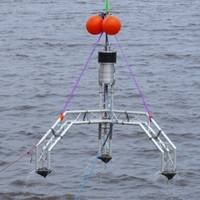EPA Mull Methane Regs for Oil & Gas Sector
The U.S. Environmental Protection Agency on Tuesday took a step toward a wider strategy to address climate change, releasing five technical papers that will help it decide whether or not to regulate methane emissions from the oil and gas sector. The "white papers" follow the White House's announcement in March of a plan to reduce methane emissions both domestically and internationally through incentive-based programs and the administration's existing authorities. The suggestion drew a rebuke at the time from the main oil and gas lobby group, the American Petroleum Institute, which said its members were already taking steps to cut emissions.
New Offshore Oil & Gas Leak Detection Technology

Sonardyne Asia Pte Ltd. to launch ALDS (Automatic Leak Detection Sonar} at upcoming OSEA Singapore expo. ALDS has been designed to continuously and automatically detect and localise oil and gas leaks below 1 barrel per day in excess of 500 metres whilst eliminating transient acoustic targets that could trigger false alarms. Sonardyne’s ALDS is designed to continuously monitor one billion cubic feet of water for leaks around subsea oil and gas assets. Capable of 360° coverage, it can detect leaks at rates of less than one barrel per day at ranges in excess of 500 metres in deep water.
Sonardyne Launches Leak Detection Sonar
Sonardyne International has announced the launch of an Automatic Leak Detection Sonar (ALDS) at the Oceanology International Exhibition and Conference in London. The Sonardyne product is an active sonar capable of detecting and localizing deep water hydrocarbon leaks around offshore installations and pipelines soon after they develop, allowing operators to respond immediately and accurately in the case of a leak.ALDS is designed to detect oil and gas leaks at significant ranges, allowing coverage of wide areas from a single sensor. Typically, in deep water, the system will detect gas leaks of 1bpd (barrel per day) at a range of 500m and live oil leaks of 10bpd at the same range.
Gulf of Mexico Port Update
The U.S. Department of Transportation issued the following status report on ports affected by Hurricane Katrina: Port of New Orleans: Operational to 42 feet Port of Fourchon: Operation to 24 feet Port of Gulfport: Operational to 30 feet Port of Biloxi: Operational to 9 feet Port of Pascagoula: Operational to 36 feet Port of Mobile: Operational to 43 feet Port of Fourchon: Operational to 24 feet The Industrial Canal is open east of the Cowan/Lorraine bridge. All major interstate crude oil, refined product, and natural gas transmission pipelines are operating Louisiana Offshore Oil Port (LOOP) operating at 75% capacity. Numerous reports of oil and gas leaks in the Gulf of Mexico. Some of these may be from pipelines. Damage assessments have not yet been conducted.









